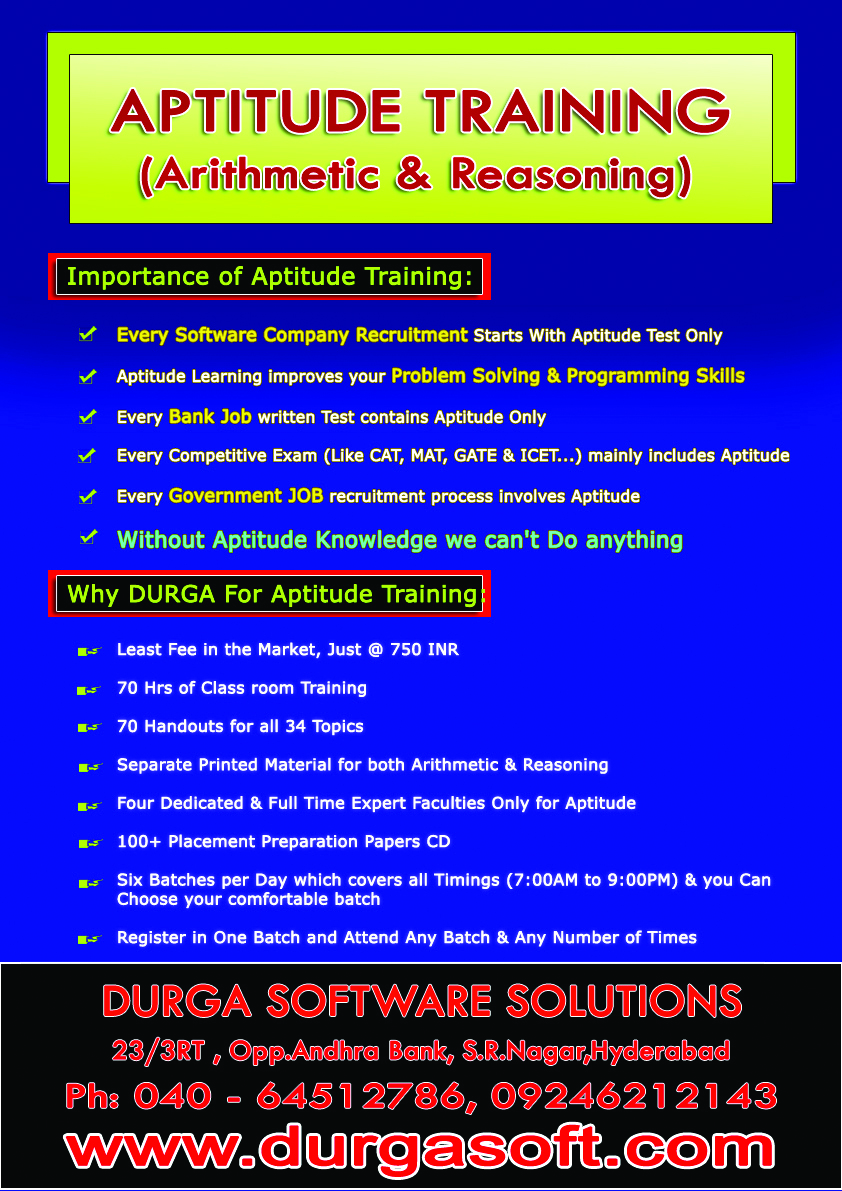Syllabus:
ORACLE FORMS & REPORTS
WORKING WITH Forms
Introduction to D2K:
Advantages, Features, and role of D2K in ERP
Pre-requisites for D2K
Tools used in D2K
Basic Concepts of D2K
How to install & work with D2K
Interfaces of forms
Form Module
Blocks
Items
Frames
Cansva
Window
Pl/SQL Code Blocks
Types of Data Blocks
Creation of data block through wizards
Creation of Master-Detail data blocks
Product MASTER data entry screen
Creation of data blocks through manually
Manipulating Properties
Create of visual attributes
Creation of property classes
Creation of Object Groups
Creating & using objects groups
Creation of Objects Libraries
Creating Objects Libraries
Form Triggers
Types of Form Triggers
Applying Triggers on Different controls
Alerts
Calling Alerts , Displaying Alerts
Re-Using Alerts
Changing Properties of Alerts at Runtime
Editors
Creating Editors
Types of Editors
Calling editors thru code
Using Images Items
Storing and Retrieving images in Database
Transferring images from files n images items
Canvases
Creation of Content Canvas
Creation of Stacked Canvas
Creation of Tab Canvas
Creation of Horizontal Toolbar Canvas
Creation of Vertical Toolbar Canvas
Applying password to Application
Windows
Changing window properties
Types of windows
Document, Dailog & Model, Modeless
Navigation between windows of a form
Menus
Creation oMenus
Usage of Menus in required forms
Creation popup menus
Program Units
Defining procedures, Functions & Packages in Forms
Using stored procedures functions & packages elements in
Forms
Creating stored procedures and functions thru Forms
PL/SQL Libraries
Usage of PL/SQL libraries in different forms using Attached
Libraries
Database Objects
Using database objects available at backend
Creation Database objects thru Forms
Working with objects Technology
Defining & Using Objects in Form
Record Groups
Creation of Record Groups based on Query
Creation of Record Group based on Static Values
LOVs
Creation of LOVs using existing Record Groups
Creation of LOVs manually
Creation of LOVs along with Record Group
Creation of Runtime Record Groups
Error Handling
Trapping different types of errors in Forms
Reports
Introduction
Advantages, features and role of reports in D2K
Fundamentals of Reports
Interfaces of Reports
Creation of Reports using Wizards
Tabular Report
Form-Like Reports
Mailing Label Reports
Form Letter
Group Left Report
Group above Report
Matrix Report
Matrix with Group
Creation of Reports Manually
Creation of Reports Manually
Creation of Reports using parameters
User Parameters
System Parameters
Manual Reports
Creation of Reports through data model SQL Query
Formula Columns
Summary Columns
Place Holder Columns
Data Links
Cross Product
Report Triggers
Before Parameter Form
After parameter Form
Before Report
Between Pages
After Report
Creation of Templates
Usage of Templates in Required Reports
Communication / Interlinking of Reports
Calling Reports from forms
Using RUN_PRODUCT()
Communication/Inter Linking of
Forms & Reports
Creation of Parameters
Calling different Forms
Calling different forms with parameters
Calling different Reports with parameters
With Text & Data Parameters
Project Scenarios & conclusion

